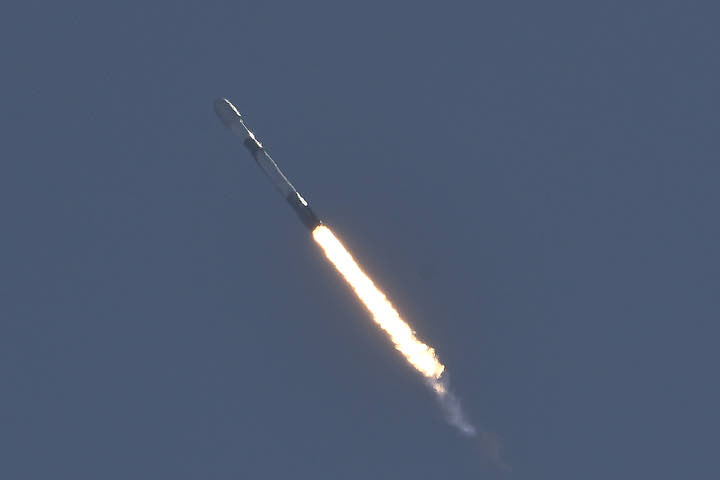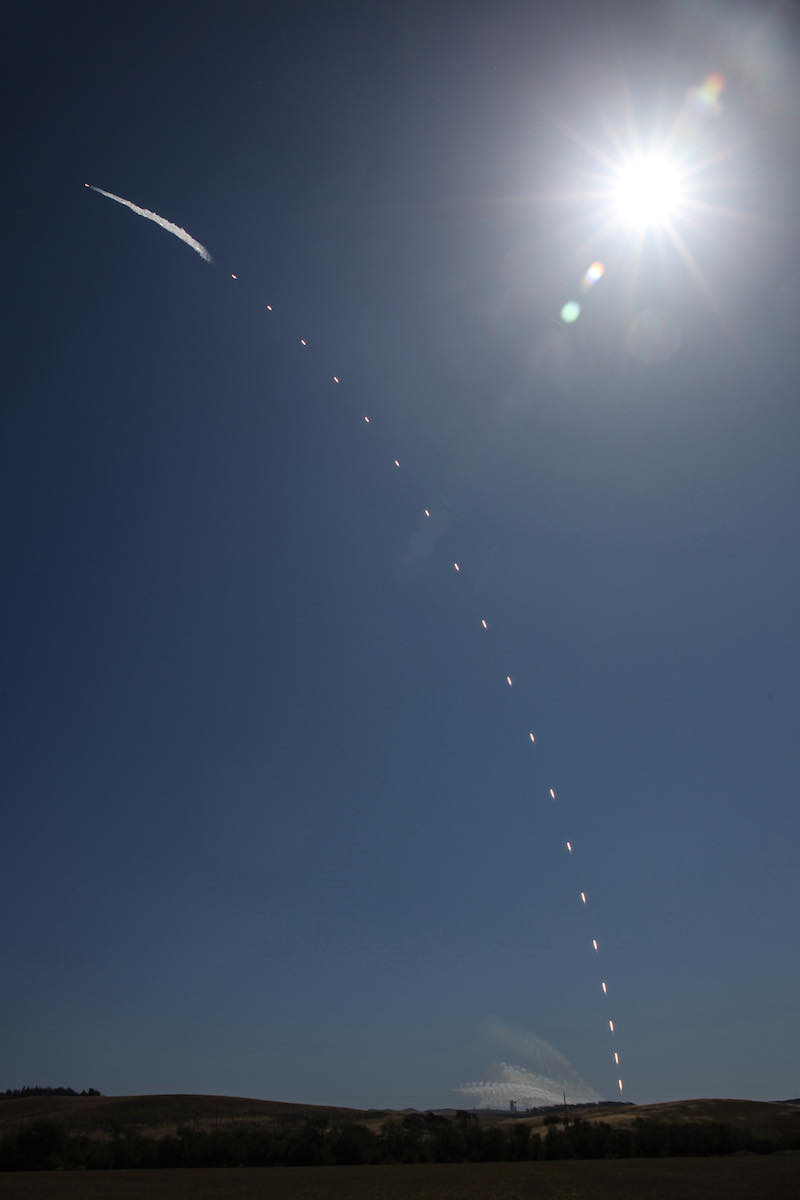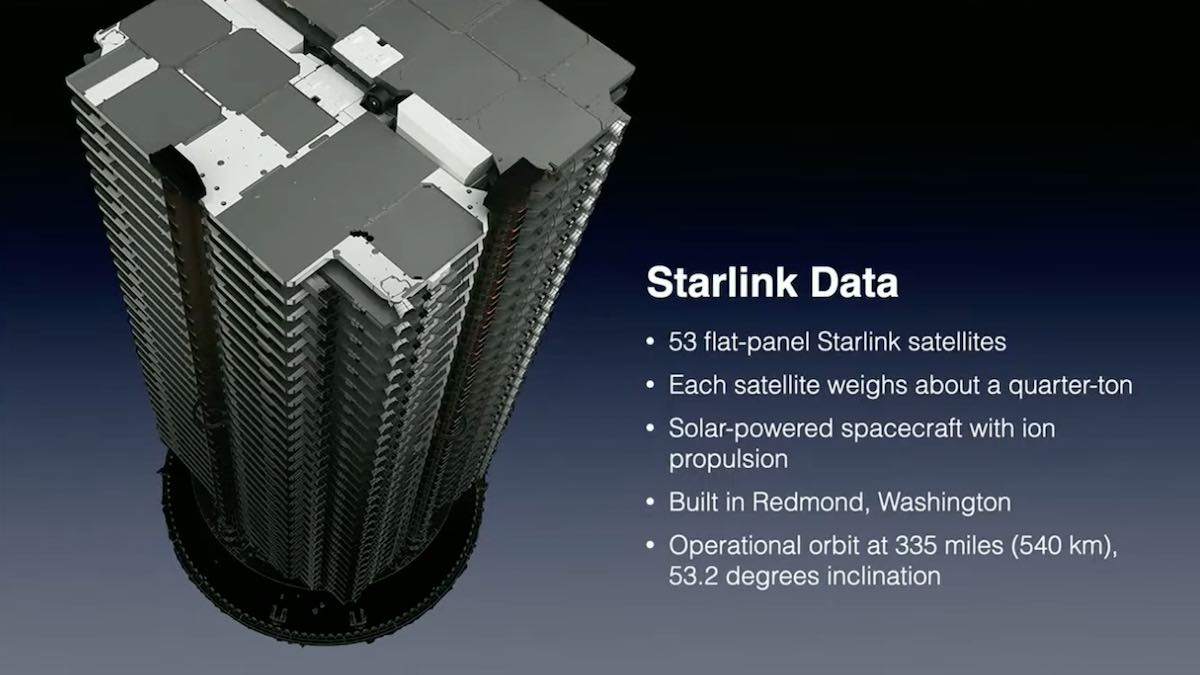
SpaceX launched a Falcon 9 rocket Friday afternoon from California’s Central Coast with another batch 53 Starlink internet satellites, pushing the total number of spacecraft launched in the network above 2,500, including testbeds and prototypes already cycled out of the fleet.
The Falcon 9 lifted off at 3:07:50 p.m. PDT (6:07:50 p.m. EDT: 2207:50 GMT) Friday from Vandenberg Space Force Base, a military spaceport between Los Angeles and San Francisco.
With winds at Vandenberg near the Falcon 9’s launch limit, the 229-foot-tall (70-meter) rocket powered through a sunny sky with nine Merlin engines throttling up to 1.7 million pounds of thrust.
Heading south-southeast, the kerosene-burning engines shut off two-and-a-half minutes after liftoff, then the booster disconnected from the Falcon 9 second stage. The second stage’s single engine lit to accelerate the 53 Starlink satellites into orbit, while the booster descended to a propulsive landing on SpaceX’s floating drone ship “Of Course I Still Love You” in the Pacific Ocean.
The landing marked the end of the fifth flight for this booster — tail number B1063 — as the Falcon 9’s upper stage followed a coast-hugging trajectory along Southern California and Baja California.
The Falcon 9’s second stage fired its engine two times to place the flat-packed Starlink satellites into a near-circular orbit averaging about 193 miles (310 kilometers) above Earth, at an inclination of 53.2 degrees to the equator.
SpaceX’s launch team confirmed the rocket placed the satellites into the expected orbit, then deployed the Starlink spacecraft about 62 minutes after liftoff. Retention rods released from the Falcon 9’s second stage to allow the Starlink satellites, each more than a quarter-ton, to fly free from the rocket.

The mission was the 19th Falcon 9 launch of the year, and the 45th SpaceX mission primarily dedicated to deploying satellites for the Starlink internet network.
The launch from Vandenberg raised the total number of Starlink satellites launched to more than 2,547 spacecraft. That number includes prototypes, failed satellites, and decommissioned spacecraft no longer in the constellation.
More than 2,200 Starlink satellites are currently in orbit and working, according to an analysis by Jonathan McDowell, an astrophysicist who tracks spaceflight activity. That’s about half of SpaceX’s planned first-generation network of 4,408 Starlink satellites.
The 4,400 satellites will be spread among five different orbital “shells” at different altitudes and inclinations. SpaceX, founded and led by Elon Musk, has signaled it eventually intends to launch as many as 42,000 satellites.
The network beams high-speed, low-latency internet signals around the world, reaching consumers, underserved communities, and other potential users like the U.S. military. SpaceX says the Starlink network is now available to consumers in 32 countries.
After separation from the Falcon 9 rocket, the Starlink satellites were programmed to unfurl solar panels and activate krypton-fueled ion thrusters to begin raising their orbits to an operational altitude of 335 miles (540 kilometers).

The mission from California on Friday was to be followed by another Falcon 9 launch Saturday from Cape Canaveral. The launch from Florida will carry another 53 Starlink internet satellites into orbit.
Liftoff of SpaceX’s 20th mission of the year is set for 4:40:50 p.m. EDT (2040:50 GMT) from pad 40 at Cape Canaveral Space Force Station. The Falcon 9, with a brand new first stage, will head northeast from the Florida launch base to deliver its Starlink payloads to the same altitude and inclination as Friday’s flight.
The back-to-back launches continue SpaceX’s blistering launch cadence in 2022. With another launch Saturday, SpaceX will have logged seven Falcon 9 missions in less than a month.
Email the author.
Follow Stephen Clark on Twitter: @StephenClark1.
from Spaceflight Now https://ift.tt/OHWJYv7
via World Space Info







0 comments:
Post a Comment